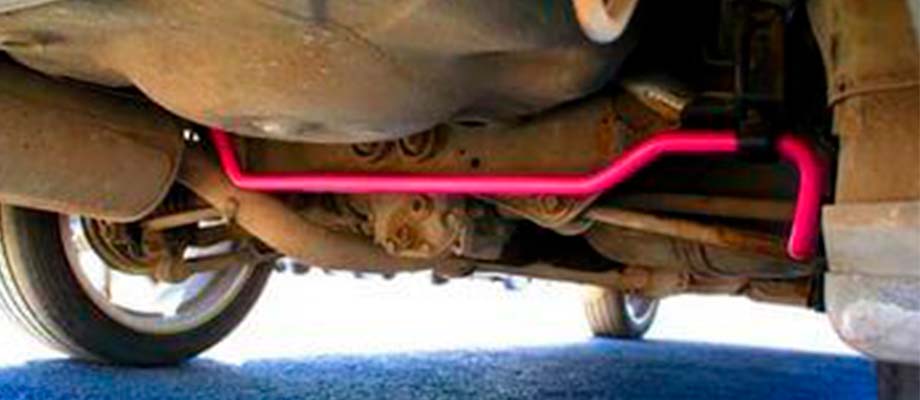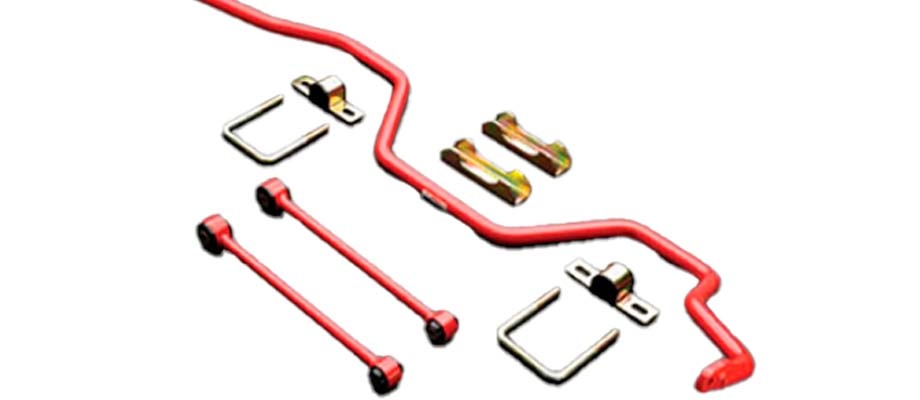
Why is a stabilizer bar needed and how does it work
Springs and springs in automobile suspensions serve as dampers. They reduce the impact of bumps and unpleasant shaking due to bumps in the road and make driving more comfortable. At the same time, not only the driver and passengers, but also the parts and components of the car suffer less from vibration.
At the same time, the presence of elastic components leads to a rather noticeable rocking of the machine in the longitudinal and transverse directions. Shock absorbers generally help with this problem. Nevertheless, even the presence of shock absorbers does not save you from a dangerous side roll when entering a turn. In some cases, such a roll can lead to a rollover.
To reduce the degree of heeling in corners and minimize the likelihood of an accident, almost all passenger cars produced in our time are equipped with an anti-roll bar. The only exceptions are models equipped with the so-called adaptive suspension, in which the degree of damping of the shock absorbers is electronically controlled and quickly changes depending on the quality of the road and driving parameters (acceleration, ground clearance, and others).
The anti-roll bar often escapes the attention of motorists. However, you need to have an idea about it, since it is an important element of the suspension, on which the safety and handling of the car to a large extent depends.
In the general case, the anti-roll bar is a U-shaped structure, the main element of which is a rod or pipe. The rod, which is made from special spring steel, runs across the chassis from the left wheel to the right. Often its real shape is very complex and takes into account the presence and location of other components of the suspension.

By means of bushings and clamps, the device is attached to the frame. The rod can rotate inside the bushings. There are hinged joints at the ends of the rod. They are used to connect to suspension arms or suspension struts.
During the lateral tilt of the car, one of the racks moves up, the other down. In this case, the longitudinal sections of the rod act as levers, twisting the transverse part of the stabilizer like a torsion bar. As a result, an elastic moment arises that prevents roll. With an increase in the lateral roll, the counteracting moment also increases.
But the device has no effect on the vertical and longitudinal displacements of the suspension. While the car is moving strictly in a straight line, the stabilizer does not manifest itself in any way.
In addition to direct articulation with the suspension, the stabilizer often uses racks (rods) in the form of a rod with hinges at the ends. Complements the stabilizer kit with a set of fasteners.

The anti-roll bar, as a rule, is placed on both axles of the suspension. The part for the rear axle usually has its own design features, this should be considered when buying. At the same time, the rear stabilizer is often completely absent. For example, it is not available on dependent rear suspensions, in which the role of a stabilizer is performed by a torsion beam together with trailing arms.
The efficiency of the device is determined by its rigidity. The increase in rigidity will provide safety when passing tighter turns, which is especially important for trucks and sports cars. However, the comfort level of the set will decrease.
There are active stabilizers that allow you to adjust the rigidity of the device, adjusting to specific road conditions and the nature of the movement.
The change in stiffness in them is carried out through the use of an active electric or hydraulic drive. To control the drive, the ECU uses data from a number of sensors.
There are other solutions, such as installing hydraulic cylinders instead of struts, as in the dynamic chassis control system offered by Porsche, or in the kinetic dynamic suspension that is installed on Toyota SUVs. Here, too, everything is monitored by electronics.
However, the use of active stabilizers, as well as adaptive suspensions, of course, affects the price of the car.
Although the device in question certainly has a positive effect on the safety and stability of the vehicle, its use still has some negative consequences that have to be put up with.
For example, in a fully independent suspension, each wheel moves in space without affecting the other wheels. However, the anti-roll bar forces you to sacrifice independence to some extent. And the stiffer the stabilizer, the less independence, and hence the level of comfort. This should first of all be taken into account by fans of tuning.
In addition, the presence of this part reduces the suspension free play, which is not very good when driving off-road. Therefore, in some models of SUVs, a simple mechanical or electronic shutdown of the stabilizer is provided.
As for wear resistance, the most vulnerable elements are bushings and racks. The rod itself can be damaged except by impact. If the curvature is small, you can try to straighten it. Significant deformation is unlikely to be fully corrected, and this will adversely affect the efficiency of the device. Therefore, in such a situation, it is better to replace the part with a new one.